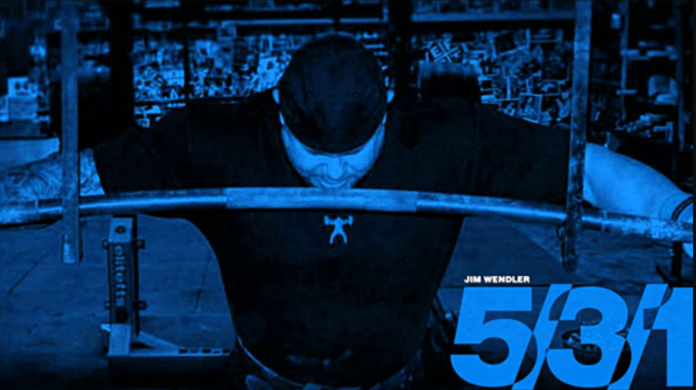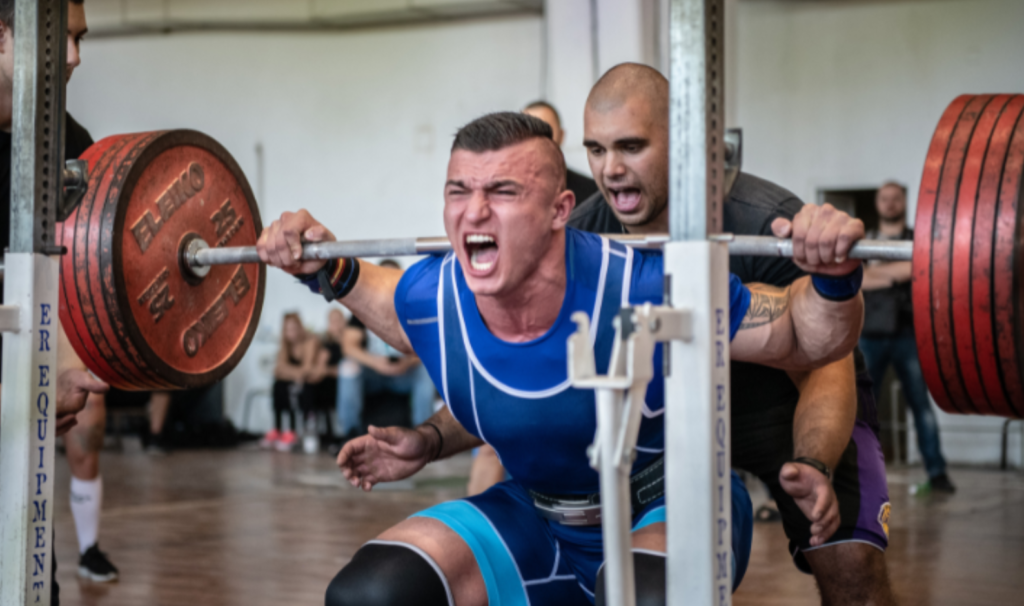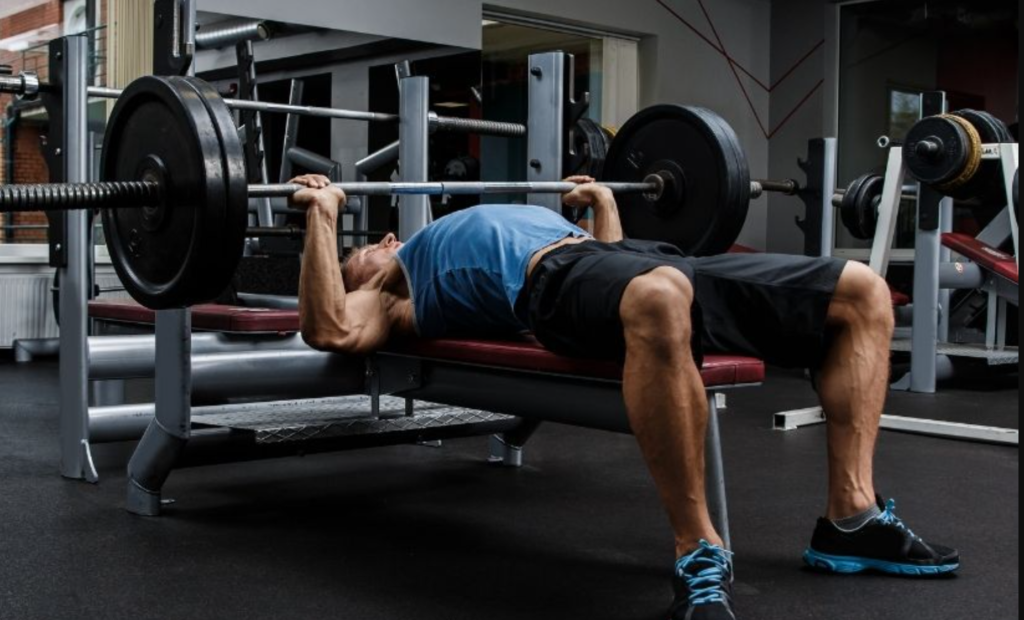
BJJ, or Brazilian Jiu Jitsu, is a martial art that requires strength, endurance, and technique. While mastering techniques is crucial, it’s equally important to have a solid foundation of strength and conditioning. This is where the 5/3/1 program comes in. The 5/3/1 program is a strength training program designed to increase strength and power. It’s a popular program among athletes, including those in the BJJ community. In this article, we’ll discuss the importance of strength training in BJJ, explain the 5/3/1 program, and explore how it can benefit BJJ practitioners. Whether you’re a beginner or a seasoned practitioner, this article will provide valuable insights into the 5/3/1 program and how it can take your BJJ game to the next level.
Strength Training For BJJ
Strength training is a crucial aspect of Brazilian Jiu-Jitsu that can enhance overall performance and reduce the risk of injury. Incorporating strength training exercises into your BJJ training routine can provide numerous benefits, from increased power and explosiveness to improved grip strength and flexibility.
Physical Demands Of BJJ
BJJ is a martial art that requires significant physical demands. Practitioners need to have strength, endurance, and agility to perform the various techniques and movements. While many focus on mastering techniques, it’s equally important to have a solid foundation of strength and conditioning to improve performance and prevent injuries. This is where the 5/3/1 program comes in.
Benefits Of Strength Training For BJJ
There are numerous benefits to incorporating strength training into BJJ training, and the 5/3/1 program can help practitioners achieve these benefits. First, strength training can help BJJ practitioners prevent injuries by improving the strength of the muscles and joints used in BJJ movements. Second, it can improve overall performance by increasing strength and power, allowing practitioners to execute techniques with more force and speed. Third, strength training can enhance endurance, which is essential in BJJ where matches can last from 5 minutes to over 20 minutes.
The 5/3/1 Program Explained
The 5/3/1 program is a strength training program that focuses on increasing strength and power. It’s a popular program among athletes, including BJJ practitioners. The program is designed to be simple and straightforward, making it easy to follow for beginners and seasoned athletes alike.
What Is The 5/3/1 Program?
In essence, it’s a training program designed to increase strength and power by focusing on multi-joint lifts, such as squats, deadlifts, and bench press. The program is based on the principle of progressive overload, which means that the weight lifted is gradually increased over time to challenge the muscles and promote strength gains.
The 5/3/1 Method Training Cycle
The 5/3/1 method is a training cycle that is typically run over a four-week period. During the first three weeks, the athlete performs the same exercises with gradually increasing weights. The cycle includes a deload week (the fourth week), during which the weight is reduced to allow for recovery and to prevent injury. The program is designed to be flexible, allowing athletes to customize it to their individual needs and goals.
How Much Weight To Lift In The 5/3/1 Program
One of the key components of the 5/3/1 program is determining how much weight to lift. This is based on the athlete’s one-rep max, or the maximum weight they can lift for one repetition. The program is structured around a specific percentage of the one-rep max, with different percentages used for different cycles. In other words you’ll need to figure out your one-rep max for the lifts you’ll use and do some simple math to see the program up.
How to Use the 5/3/1 Method
Basic Multi-Joint Lifts
The program should focus on basic multi-joint lifts, which are the most effective for building strength and power. These are the bench press, deadlift and back squat.
Starting Light
Even if you are an experienced lifter, it’s essential to start with light weights and focus on proper form and technique when you’re attempting a 5/3/1/ cycle for the first time. This is especially important for beginners who are just starting with the program.
Progress Slowly
Using the 5/3/1 method is straightforward, but it’s important to follow some basic guidelines. It is crucial not to rush adding weight, but rather progress slowly over time, gradually increasing the weight to avoid injury and allow the body to adapt. There is no need to try and load the bar with big increments every time you start a new cycle. Even the slightest increase in weight is going to be enough to make you better.
Why The 5/3/1 Program Is Effective
The program is an effective strength training program for BJJ athletes because it is simple, can be done in any commercial gym and it focuses on using many muscles during a single lift. It is also very time-efficient and proven to increase strength and power in a short time. However, it’s important to consider that the program does not only have benefits, but also some limitations, which can be customized to reflect the needs and goals of grapplers.
The Benefits Of The 5/3/1 Program For BJJ
5/3/1 is beneficial for making grapplers functionally stronger and reducing the risk of injury in BJJ athletes. The program prioritizes proper form and technique over lifting heavy weights, which minimizes the chances of injury caused by incorrect movements.
Additionally, the program includes assistance work such as pull-ups, chin-ups, and dips, which helps to develop the stabilizing muscles and promote joint health. As a result, BJJ athletes who follow the 5/3/1 program can experience improved joint stability and mobility, leading to a lower risk of injury during training and competition.
Increased Strength
One of the primary benefits of the 5/3/1 program is increased strength. By focusing on multi-joint lifts and gradually increasing weight, the program helps to build muscle mass and increase strength. This increased strength can translate to better grappling techniques, improved takedowns, and better control over opponents.
Improved Endurance
Another key benefit of the 5/3/1 program is improved endurance. The program is designed to challenge the body and promote adaptation, leading to better overall fitness and endurance. This can be especially beneficial for BJJ athletes, who need to maintain their endurance, changing the power output many times throughout a match.
Reduced Risk Of Injury
The 5/3/1 program can also help reduce the risk of injury for BJJ athletes. By focusing on proper form and technique, athletes can minimize the risk of injury during training and competition. Additionally, the program includes a deload week to allow for recovery and prevent overtraining, which can lead to injury.
What are 5/3/1’s Limitations For BJJ Athletes
While the 5/3/1 program offers many benefits, it’s important to note that it does have some limitations for BJJ athletes. They are easy to address though, as grapplers do not need to train the same as powerlifters or bodybuilders, and with slight adjustments, the program can do wonders for everyone.
Too Much Training Volume Per Week
One limitation is that the program is originally designed for four training sessions per week, which may be excessive for some athletes. Training BJJ 3-5 times a week and lifting weights for 4 days a week is too much even for professional athletes. Luckily, there are easy adaptations of the program that make ti great for Jiu-Jitsu, like organizing it into two sessions per week.
No Specific Speed Training
Additionally, the program does not include specific speed training, which are both important components of BJJ performance. That said, the stronger you get, the easier it is to incorporate speed training, and the program’s founder, Jim Wendler, has some versions of the program that account for the lack of speed training in the original few templates of the program.
The 5/3/1 Program For Jiu-Jitsu
Setting up the 5/3/1 program for Brazilian Jiu-Jitsu is pretty straightforward, but does require a bit of math and a realistic estimate of what you can actually pull off. in the following section of the article we’ll provide a sample training program design and schedule which is just a recommendation. If you truly want to understand how the program works, you should read Jim Wendler’s books on it.
How to Set Up the Program
To set up the 5/3/1 program for Jiu-Jitsu, you first need to determine your one-rep max (1RM) for each lift you plan to incorporate into your training program. Once you have established your 1RM, you can use a 5/3/1 calculator to determine the weight to use for each set. The program consists of four main lifts – squat, bench press, deadlift, and overhead press – and you will perform each lift on a different day of the week.
Sample Training Program Design And Schedule
Day 1: Squat & Bench Press
- Warm-up: 5 minutes of cardio.
- Squat: 5 sets of 65%, 75%, 85%, 5+ (as many reps as possible at 95% of 1RM).
- Bench Press: 5 sets of 65%, 75%, 85%, 5+ (as many reps as possible at 95% of 1RM).
- Accessory work for squats (pick two): Leg press, leg curls, calf raises.
- Accessory work for bench (pick two): Dumbbell rows, tricep extensions, bicep curls.
Days 2&3: Rest Days (from lifting)
Day 4: Deadlift & Overhead Press
- Warm-up: 5 minutes of cardio.
- Deadlift: 5 sets of 65%, 75%, 85%, 5+ (as many reps as possible at 95% of 1RM).
- Overhead Press: 5 sets of 65%, 75%, 85%, 5+ (as many reps as possible at 95% of 1RM).
- Accessory work for deadlift (pick two): Pull-ups, leg curls, calf raises.
- Accessory work for overhead press (pick two): Dumbbell rows, lateral raises, bicep curls.
Day 5-7: Rest Days (from lifting)
Common Mistakes to Avoid With The 5/3/1 Program
In order to achieve optimal results with the 5/3/1, it is crucial to avoid common mistakes and follow some tips for using the 5/3/1 method. These are the things you do not want to do while using Jim Wendler’s popular training method for strength and power:
- Overtraining: Overtraining can lead to injury and burnout. Make sure to follow the program’s prescribed rest days and listen to your body’s signals.
- Ignoring Mobility Work: Mobility work is crucial for BJJ athletes to maintain proper range of motion and prevent injury. Don’t overlook mobility exercises in your training program.
- Not Tracking Progress: Keep track of your progress, such as your weight lifted and reps completed. This will help you adjust your training program as needed and stay motivated.
- Don’t Customize: The 5/3/1 program is designed to be followed as written. Don’t try to customize the program to fit your needs or goals without understanding its underlying principles.
- Take It Easy with Assistance Work: Assistance exercises can help you build strength in specific areas, but don’t overdo it. Stick to the prescribed exercises and reps and avoid adding too much assistance work.
- Start with the Right Weights: Start with weights that are challenging but manageable. Overestimating your strength can lead to injury and frustration.
- Progress Slowly: Progress slowly with the weights and don’t try to rush through the program. Building strength takes time and patience.
Tips for Using the 5/3/1 Method
- Focus on Multi-Joint Lifts: The 5/3/1 program focuses on multi-joint lifts such as squats, deadlifts, and bench press. These exercises recruit more muscle fibers and are more effective at building overall strength.
- Follow the Training Cycle: The 5/3/1 program consists of four-week training cycles. Stick to the prescribed reps and weights for each week of the cycle.
- Start Light: The first week of each cycle is designed to be a deload week to allow your body to recover. Start with lighter weights and work your way up.
- Use Proper Form: Use proper form and technique when performing each exercise. Poor form can lead to injury and reduce the effectiveness of the exercise.
By avoiding common mistakes and following these tips, you can maximize the benefits of the 5/3/1 program for BJJ athletes. The program is designed to build overall strength and improve performance, but it requires patience, discipline, and proper execution.
5/3/1 FAQ
The 5/3/1 program has gained significant popularity over the years as an effective strength training program. But, with its popularity comes a lot of questions from curious individuals. Below are some frequently asked questions about the 5/3/1 program.
How do I calculate my 1RM?
Your 1RM or one-rep max is the maximum amount of weight that you can lift for one repetition. It’s important to know your 1RM to determine the correct weights to use in the 5/3/1 program. To calculate your 1RM, you can use a 1RM calculator or perform a 1RM test. However, it’s important to note that performing a 1RM test can be risky and should only be done with proper supervision.
Who is the 5/3/1 program good for?
The 5/3/1 program is suitable for individuals who want to increase their strength and overall fitness levels. It’s especially useful for powerlifters, athletes, and people who engage in combat sports like BJJ. However, it’s important to note that the program may not be suitable for beginners as it requires some level of experience with lifting weights.
Is the 5/3/1 program good for beginners?
The 5/3/1 program may not be suitable for beginners as it requires some level of experience with lifting weights. Beginners should start with a simpler program and gradually work their way up to more advanced programs like the 5/3/1 program.
Is the 5/3/1 program good for BJJ?
Yes, the 5/3/1 program can be beneficial for BJJ practitioners as it helps to increase strength, improve endurance, and reduce the risk of injury. However, it’s important to note that the program should be complemented with BJJ training and mobility work.
What is the 5/3/1 Jim Wendler program?
The 5/3/1 Jim Wendler program is a strength training program developed by Jim Wendler. It’s based on the 5/3/1 program principles and focuses on the four main lifts: the bench press, squat, deadlift, and overhead press.
What is a 5/3/1 program example?
A 5/3/1 program example involves performing the four main lifts (bench press, squat, deadlift, and overhead press) using the 5/3/1 program principles. For example, on week one, you would perform three sets of five reps at 75% of your 1RM, followed by three sets of three reps at 85% of your 1RM, and one set of five reps at 65% of your 1RM.
Conclusion
To make the most of the 5/3/1 program for BJJ, it is important to set it up correctly and avoid common mistakes, such as overtraining, ignoring mobility work, and not tracking progress. By starting with the right weights and progressing slowly, BJJ practitioners can achieve their strength training goals while avoiding injury.


![Darce Choke Encyclopedia – Origins, Mechanics and Variations [2025] BJJ, choke, Brabo, BJJ Darce Choke, D'arce Choke, Darce BJJ Choke](https://bjj-world.com/wp-content/uploads/2017/11/JungPoirierLeeYahoo-218x150.jpg)













![X-Guard Trickery Kyle Sleeman DVD Review [2025] X-Guard Trickery Kyle Sleeman DVD Review](https://bjj-world.com/wp-content/uploads/2025/03/x-guard-trickery-kyle-sleeman-dvd-review-218x150.png)
![Countering with Crab Ride Anthony Budion DVD Review [2025] Countering with Crab Ride Anthony Budion DVD Review](https://bjj-world.com/wp-content/uploads/2025/03/countering-with-crab-ride-anthony-budion-dvd-review-218x150.png)
![Closet Closed Guard Craig Jones DVD Review [2025] Closet Closed Guard Craig Jones DVD Review](https://bjj-world.com/wp-content/uploads/2025/03/closet-closed-guard-craig-jones-dvd-review-218x150.png)
![Xanadu Back Takes Levi Jones-Leary DVD Review [2025] Xanadu Back Takes Levi Jones-Leary DVD Review](https://bjj-world.com/wp-content/uploads/2025/03/xanadu-back-takes-levi-jones-leary-dvd-review-218x150.png)

![No-Gi Grapplers Guide To Front Headlock Joel Bane DVD Review [2025] No-Gi Grapplers Guide To Front Headlock Joel Bane DVD Review](https://bjj-world.com/wp-content/uploads/2025/03/no-gi-front-headlock-joel-bane-dvd-review-218x150.png)
![Welcome To The Darce Side Travis Moore DVD Review [2025] Welcome To The Darce Side Travis Moore DVD Review](https://bjj-world.com/wp-content/uploads/2025/01/welcome-to-the-darce-side-travis-moore-dvd-review-100x70.png)
![Advanced Immortal Clinch Matt Brown DVD Review [2024] Advanced Immortal Clinch Matt Brown DVD Review](https://bjj-world.com/wp-content/uploads/2024/09/advanced-immortal-clinch-matt-brown-dvd-review-100x70.png)
![The Empty Half Guard Michael Currier DVD Review [2025] The Empty Half Guard Michael Currier DVD Review](https://bjj-world.com/wp-content/uploads/2025/03/empty-half-guard-michael-currier-dvd-review-100x70.png)

![Dubious De La Riva Dominique Bell DVD Review [2024] Dubious De La Riva Dominique Bell DVD Review](https://bjj-world.com/wp-content/uploads/2024/10/dubious-de-la-riva-dominique-bell-dvd-review-100x70.png)


![Miko Hytonen Lapel Chokes From Everywhere DVD Review [2024] Miko Hytonen Lapel Chokes From Everywhere DVD Review](https://bjj-world.com/wp-content/uploads/2024/10/miko-hytonen-lapel-chokes-from-everywhere-dvd-review-100x70.png)



![Heavy Top Game Fabiano Scherner BJJ DVD Review [2025] Heavy Top Game Fabiano Scherner BJJ DVD Review](https://bjj-world.com/wp-content/uploads/2025/01/heavy-top-game-fabiano-scherner-bjj-dvd-review-100x70.png)

![Breaking Their Guard Mikey Musumeci DVD Review [2025] Breaking Their Guard Mikey Musumeci DVD Review](https://bjj-world.com/wp-content/uploads/2025/02/breaking-their-guard-mikey-musumeci-dvd-review-100x70.png)
![Countering Triangles And Omoplatas Adam Mazin DVD Review [2024] Countering Triangles And Omoplatas Adam Mazin DVD Review](https://bjj-world.com/wp-content/uploads/2024/10/countering-triangles-and-omoplatas-adam-mazin-dvd-REVIEW-100x70.png)
![I Got Your Back Jake Straus DVD Review [2025] I Got Your Back Jake Straus DVD Review](https://bjj-world.com/wp-content/uploads/2025/03/i-got-your-back-jake-straus-dvd-review-100x70.png)
![Efficiently Executing X-Guard Giancarlo Bodoni DVD Review [2024] Efficiently Executing X-Guard Giancarlo Bodoni DVD Review](https://bjj-world.com/wp-content/uploads/2024/09/efficiently-executing-x-guard-giancarlo-bodoni-dvd-REVIEW-100x70.png)

![Weight Training For Grappling Michael Israetel DVD Review [2025] Weight Training For Grappling Michael Israetel DVD Review](https://bjj-world.com/wp-content/uploads/2025/01/weight-training-for-grappling-michael-israetel-dvd-review-100x70.png)


![Tricks for Unstoppable Takedowns Georges St Pierre DVD Review [2024] Tricks for Unstoppable Takedowns Georges St Pierre DVD Review](https://bjj-world.com/wp-content/uploads/2024/12/unstoppable-takedowns-georges-st-pierre-dvd-review-100x70.png)
![Essential Shin To Shin System Shawn Williams DVD Review [2025] Essential Shin To Shin System Shawn Williams DVD Review](https://bjj-world.com/wp-content/uploads/2025/01/shin-to-shin-system-shawn-williams-dvd-review-100x70.png)
![The Rack Kyle Watson BJJ DVD Review [2025] The Rack Kyle Watson BJJ DVD Review](https://bjj-world.com/wp-content/uploads/2024/12/the-rack-kyle-watson-bjj-dvd-review-100x70.png)


![Guard Busters Bill Cooper BJJ DVD Review [2025] Guard Busters Bill Cooper BJJ DVD Review](https://bjj-world.com/wp-content/uploads/2025/03/guard-busters-bill-cooper-bjj-dvd-review-100x70.png)